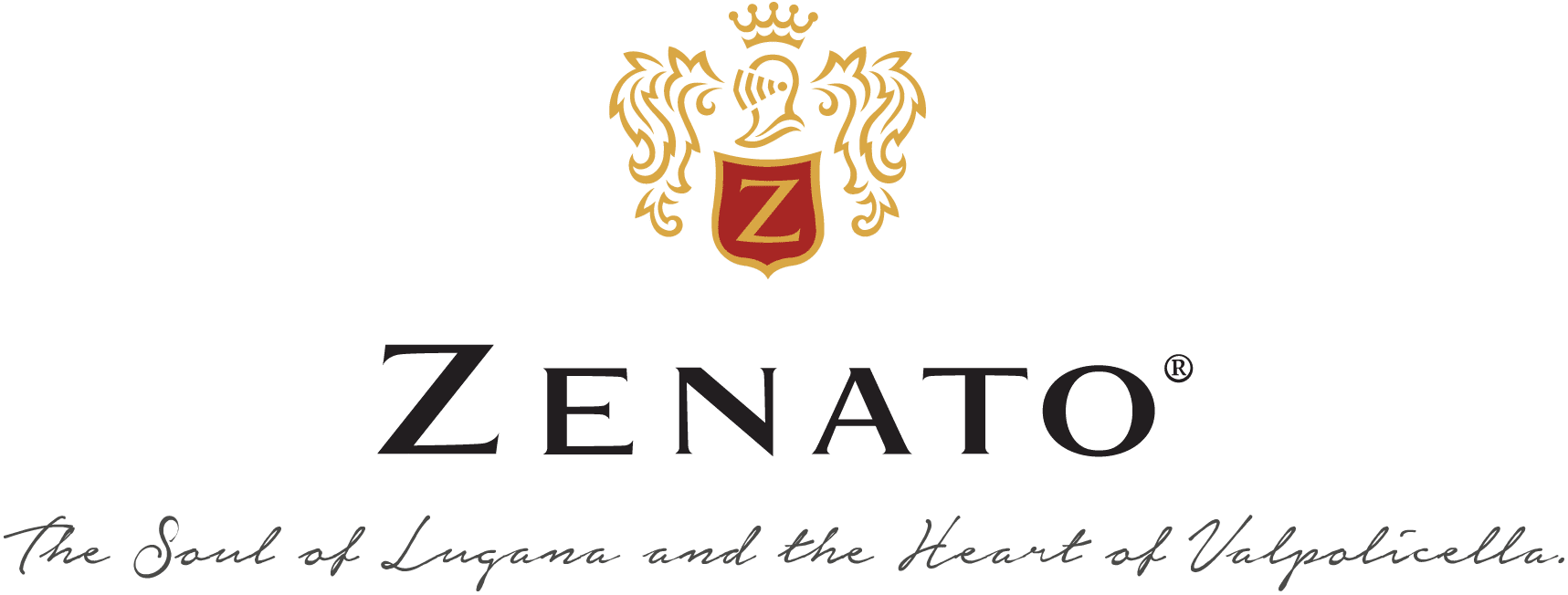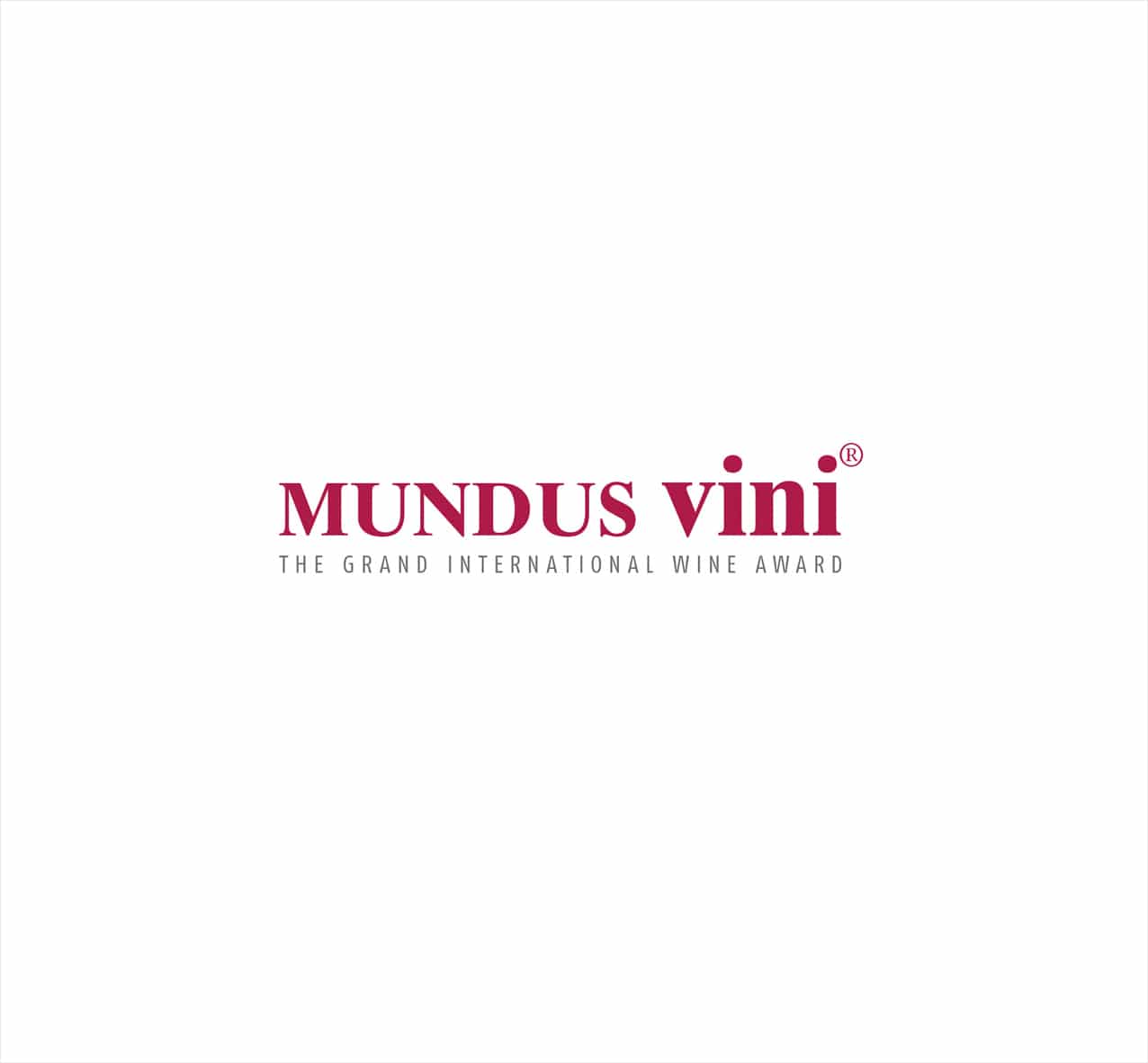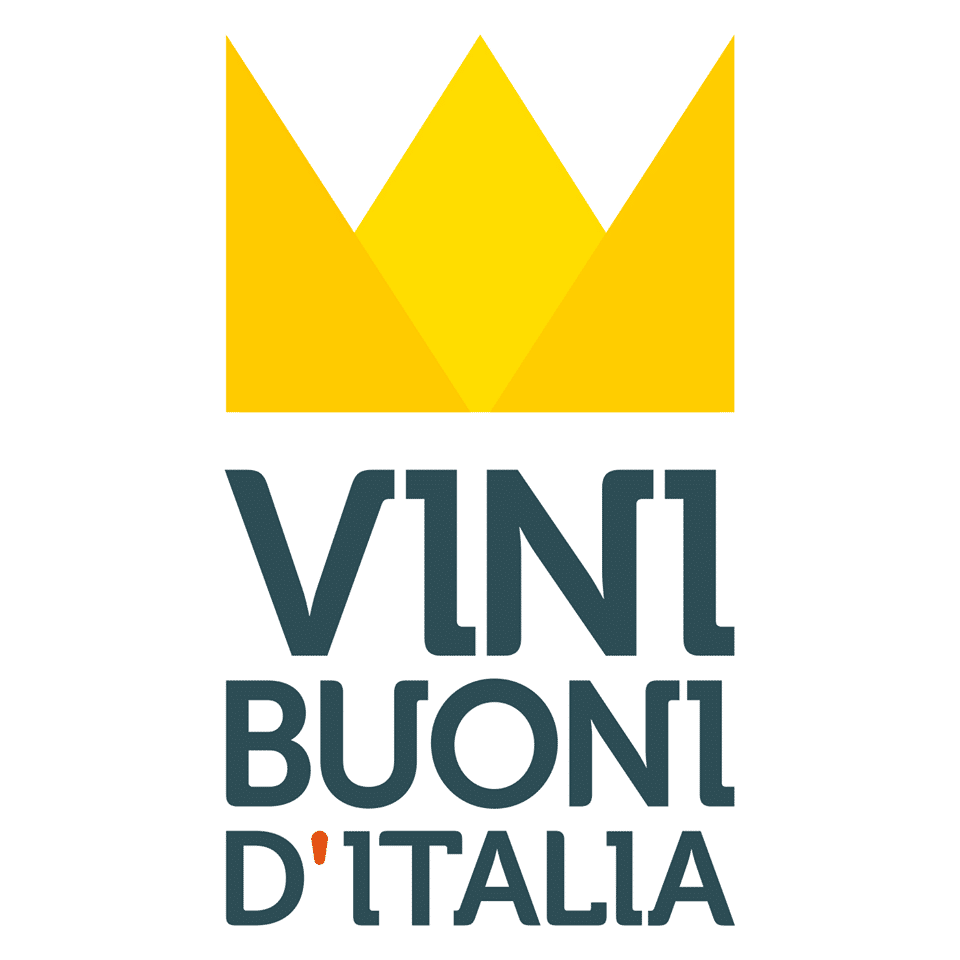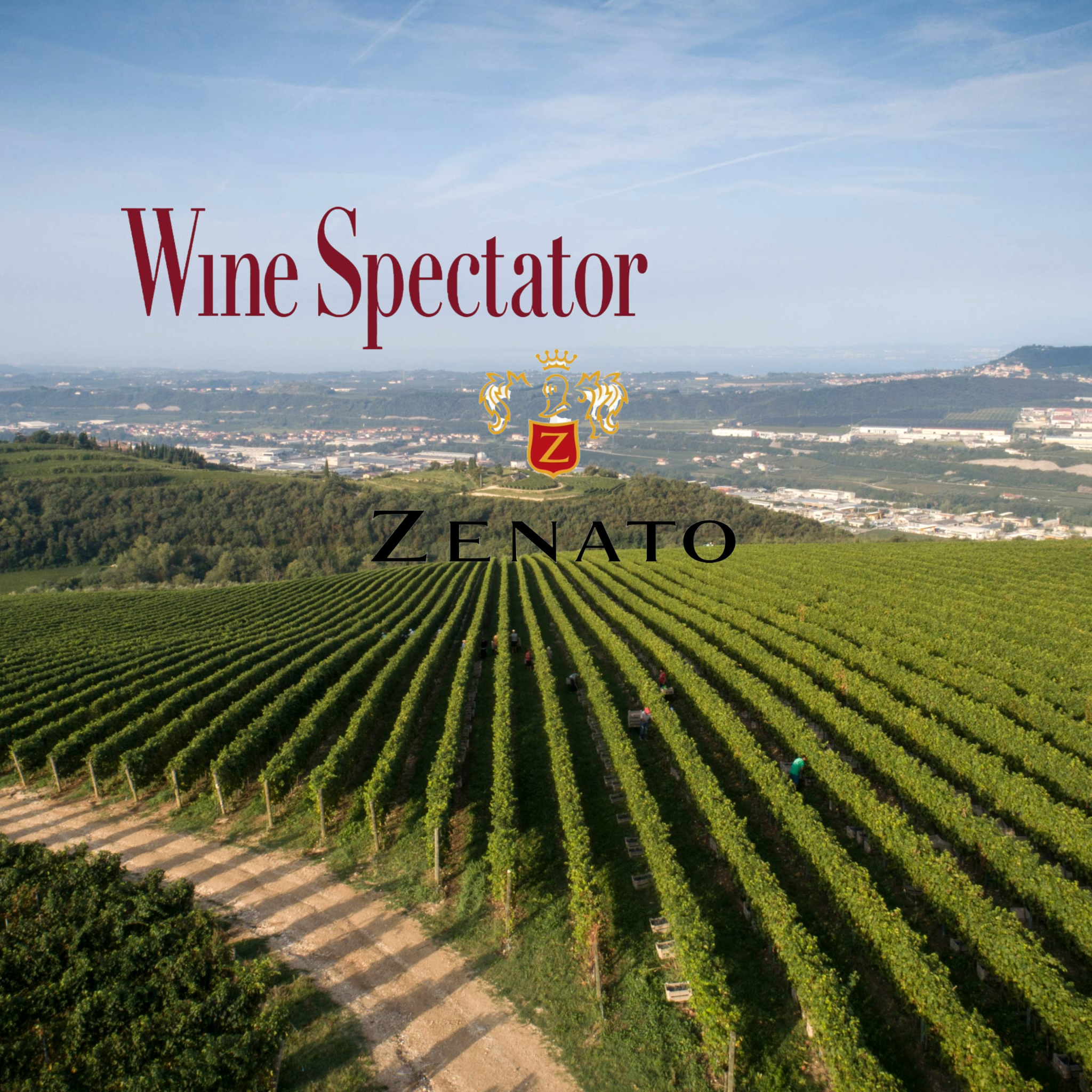Falstaff: high ratings for Zenato
Continue readingZenato’s awards’ update
Zenato‘s awards’ update: Yes, ZENATO DID IT AGAIN!
Nice ratings by James Suckling for theis Amarone Riserva, Amarone Archivio Storico and Lugana Riserva,
Produced only in top vintages, this graceful wine is made from a selection of Corvina and Rondinella grapes grown in the oldest vineyards in the township of Sant’Ambrogio in Valpolicella’s “classic” zone.
Following vinification, it undergoes long-term aging for at least 4 years in Slavonian oak casks.
It represents the very identity of the winery and its legacy throughout the world – a wine that can age and be enjoyed for more than 20 years.
With luminous and dense color, elegant complexity, and a wonderful touch of spice, it’s a wholehearted expression of the land where it is made.
The project: “Amarone Archivio Storico Zenato” was created to celebrate a history of caring, dedication and passion, which led to recognize worldwide the name of Zenato as a synonym of excellence and identity of a unique area: Valpolicella.
The first vintage,(2008) has rested for a decade in large oak barrels.
The milestone of this project that underlines the link to a territory in which we have believed and invested since the beginning.
This is a story of care, dedication and passion.
This Lugana Riserva is the fruit of the Zenato family’s genuine passion and a reflection of their history in the appellation.
The grapes for this wine come from the oldest vines on their Podere Massoni farm. They are harvested slightly late, around mid-October.
Fermentation takes place in oak cask (70%) and stainless steel (30%).
Light brilliant gold in color, this wine delivers intense multi-faceted aromas on the nose, with floral and citrus notes, spices, white plum, and vanilla.
On the palate, it’s rich in flavor, with great depth and balance. An ideal white for aging.

The Story: Zenato is the story of a family that firmly planted its roots in the land. It was made possible thanks to the passion and entrepreneurial vision of the estate’s founder, Sergio, who managed to fulfill his greatest dream: to create a winery capable of harvesting the fruits of the earth and transform them into emotions with matchless flavor.
Today, more than 60 years later, the results are testament to his extraordinary vision. A wonderful story took shape thanks to his vision and today its star is his family: Wife Carla and children Alberto and Nadia.
Their eyes and their heart continue down the path that Sergio laid out with great clarity as he steadied the course toward quality and love for their land. Over time, that land wasn’t just Lugana but also Valpolicella, with its celebrated red wines and their matchless aromas.
Two faces:
One white, the other red, both emblems of high-quality wines that are born through a visceral passion for the land, through respect for time, through a family tradition that has championed local grape varieties for 60 years.
Valpolicella
Taking over the Costalunga estate, in the heart of Valpolicella Classica, Sergio Zenato wanted to measure himself in a new venture, after making the most out of his Lugana vineyards: to make it a model vineyard, beautiful to look at, cared for in every detail, in which to apply modern agronomic techniques and at the same time resume the traditional methods that had defined the Valpolicella landscape.
Lugana
In the flash of an eye and the wonder of Lake Garda is all there: in the beauty of the landscape; in the naturalist, historic, and artistic value of the land; in the mild climate.
The secret of Trebbiano di Lugana, a native grape variety planted on the southern banks of Lake Garda, is hidden in its origins.
With the backdrop of this pristine setting, the gates of the Santa Cristina estate open up on to a broad road with elegant red rose bushes on either side.


More info? Check their www →
Zenato: awards by WEINWIRTSCHAFT
Zenato awards by WEINWIRTSCHAFT, the magazine for all professionally responsible buyers and sellers of wine in Germany.
We are proud to announce an important international recognition for Zenato‘s wines: the prestigious German magazine “Weinwirtschaft” has ranked the Ripassa, Valpolicella Ripasso DOC Superiore, as the 3rd best Italian red wine and the 6th best red in the world.



Zenato. The soul of Lugana and the Heart of Valpolicella.
Two faces: One white, the other red, both emblems of high-quality wines that are born through a visceral passion for the land, through respect for time, through a family tradition that has championed local grape varieties for 60 years.
Zenato: the story of a family that firmly planted its roots in the land. It was made possible thanks to the passion and entrepreneurial vision of the estate’s founder, Sergio, who managed to fulfill his greatest dream: to create a winery capable of harvesting the fruits of the earth and transform them into emotions with matchless flavor.
Today, more than 60 years later, the results are testament to his extraordinary vision. A wonderful story took shape thanks to his vision and today its star is his family: Wife Carla and children Alberto and Nadia.
Their eyes and their heart continue down the path that Sergio laid out with great clarity as he steadied the course toward quality and love for their land. Over time, that land wasn’t just Lugana but also Valpolicella, with its celebrated red wines and their matchless aromas.
Taking over the Costalunga estate, in the heart of Valpolicella Classica, Sergio Zenato wanted to measure himself in a new venture, after making the most out of his Lugana vineyards: to make it a model vineyard, beautiful to look at, cared for in every detail, in which to apply modern agronomic techniques and at the same time resume the traditional methods that had defined the Valpolicella landscape.
In a thorough manner, Sergio Zenato drew the distribution on the land of the vines selected for the production of the different wines, going so far as to indicate the direction of the rows so that the vines could receive maximum benefits from the sun. He took special care to make the soil work well to achieve a dry and permeable soil without water retention.

A passionate dedication that we read in the construction of the characteristic dry-stone walls, at first sight elegant support structures, in actual fact an efficient containment system that guarantees the vine the three fundamental elements it needs: the warmth of the sun and the ventilation of air and water thanks to the gaps existing between the stones of the walls and the flaky crumbles of the subsurface.
“Sergio Zenato manicured the morainic hills for years, from the most strategic observation point on Lake Garda in Peschiera. His reflection was cast over the largest body of blue in Italy. And since the 1960s, he saw in Trebbiano di Lugana something that few others had intuited: that the color, aromas, and favors of the white wine it produced could travel the world.”

In the flash of an eye and the wonder of Lake Garda is all there: in the beauty of the landscape; in the naturalist, historic, and artistic value of the land; in the mild climate.
The secret of Trebbiano di Lugana, a native grape variety planted on the southern banks of Lake Garda, is hidden in its origins.
With the backdrop of this pristine setting, the gates of the Santa Cristina estate open up on to a broad road with elegant red rose bushes on either side. They are the silent sentinels to whom the Zenato family has entrusted their rows of vines.
All of the incredible things that have happened in this little corner of the world are thanks to the extraordinary intuition and entrepreneurial power of a grape grower who was in love with his land and absolutely convinced of the quality of the wines that only this land could produce. It all began with a white wine, Lugana: Sergio Zenato’s Challenge and Dream since the 1960s.
James Suckling: awards for Zenato
Nice James Suckling reviews for Zenato‘s wines.
Amarone della Valpolicella Classico and the Riserva Sergio Zenato received both 95 Points.
Good results for the Lugana Riserva Sergio Zenato too, with a rating of 91 Points.

Amarone della Valpolicella Classico 2019
“The jewel of Zenato’s production, this wine is made from a selection of top grapes from Valpolicella Classica grown in Sant’Ambrogio township (Corvina, Rondinella, Oseleta, and Croatina).
The grapes are dried for 4 months and crushing is not carried out until January.
Slow fermentation with skin contact follows and then the wine is aged for 36 months in large-format Slavonian casks. It is then aged in bottle before being released.
This is a majestic wine, intense, and ethereal, with notes of bay leaf and distillate-cured cherries. The impressive balance between all its components makes it ideal for long-term aging.”
Amarone della Valpolicella Riserva Sergio Zenato 2018
“Produced only in top vintages, this graceful wine is made from a selection of Corvina and Rondinella grapes grown in the oldest vineyards in the township of Sant’Ambrogio in Valpolicella’s “classic” zone.
Following vinification, it undergoes long-term aging for at least 4 years in Slavonian oak casks.
It represents the very identity of the winery and its legacy throughout the world – a wine that can age and be enjoyed for more than 20 years.
With luminous and dense color, elegant complexity, and a wonderful touch of spice, it’s a wholehearted expression of the land where it is made.”
Lugana Riserva Sergio Zenato 2021
“This Lugana Riserva is the fruit of the Zenato family’s genuine passion and a reflection of their history in the appellation.
The grapes for this wine come from the oldest vines on their Podere Massoni farm. They are harvested slightly late, around mid-October.
Fermentation takes place in oak cask (70%) and stainless steel (30%).
Light brilliant gold in color, this wine delivers intense multi-faceted aromas on the nose, with floral and citrus notes, spices, white plum, and vanilla.
On the palate, it’s rich in flavor, with great depth and balance. An ideal white for aging.”

The Soul of Lugana and the Heart of Valpolicella.
95 hectares of top vineyards in Lugana and Valpolicella’s “classic zone”.
Today Zenato’s vineyards cover 95 hectares on the S. Cristina estate in San Benedetto di Lugana, devoted to Trebbiano di Lugana, and on the Costalunga estate in Valpolicella, home of Zenato’s famous Amarone, which is home to the renowned Corvina, Rondinella and Oseleta grape varieties.

Sergio Zenato manicured the morainic hills for years, from the most strategic observation point on Lake Garda in Peschiera. His reflection was cast over the largest body of blue in Italy. And since the 1960s, he saw in Trebbiano di Lugana something that few others had intuited: that the color, aromas, and favors of the white wine it produced could travel the world.”
In the flash of an eye and the wonder of Lake Garda is all there: in the beauty of the landscape; in the naturalist, historic, and artistic value of the land; in the mild climate. The secret of Trebbiano di Lugana, a native grape variety planted on the southern banks of Lake Garda, is hidden in its origins.

With the backdrop of this pristine setting, the gates of the Santa Cristina estate open up on to a broad road with elegant red rose bushes on either side. They are the silent sentinels to whom the Zenato family has entrusted their rows of vines.
All of the incredible things that have happened in this little corner of the world are thanks to the extraordinary intuition and entrepreneurial power of a grape grower who was in love with his land and absolutely convinced of the quality of the wines that only this land could produce. It all began with a white wine, Lugana: Sergio Zenato’s Challenge and Dream since the 1960s.
Taking over the Costalunga estate, in the heart of Valpolicella Classica, Sergio Zenato wanted to measure himself in a new venture, after making the most out of his Lugana vineyards: to make it a model vineyard, beautiful to look at, cared for in every detail, in which to apply modern agronomic techniques and at the same time resume the traditional methods that had defined the Valpolicella landscape

In a thorough manner, Sergio Zenato drew the distribution on the land of the vines selected for the production of the different wines, going so far as to indicate the direction of the rows so that the vines could receive maximum benefits from the sun. He took special care to make the soil work well to achieve a dry and permeable soil without water retention.
A passionate dedication that we read in the construction of the characteristic dry-stone walls, at first sight elegant support structures, in actual fact an efficient containment system that guarantees the vine the three fundamental elements it needs: the warmth of the sun and the ventilation of air and water thanks to the gaps existing between the stones of the walls and the flaky crumbles of the subsurface.
Discover the world of Zenato ….
Mundus Vini: outstanding results for Zenato
Mundus Vini: outstanding results for Zenato
1 Grand Gold, 4 Golds and 1 Silver for Zenato at the Summer Mundus Vini Competition.
Well done!!!!

GRAND GOLD

Made from Corvina Veronese, this single-vineyard designate wine is deeply connected to the land where it is grown.
Its intense, deep ruby red color tinges the glass as its thick, lingering legs slide down the edges.
On the nose delicious and enchanting red fruit, blueberry, and blackberry notes that evolve into intense aromas of black cherry, cooked prune, and jam.
It’s ideal for grilled meats, roast meats, game, and grilled sausage. It also pairs wonderfully with aged cheeses and rich tomato sauces prepared with herbs.
GOLD MEDAL

The Zenato Lugana San Benedetto is made from a selection of the best grapes from the eponymous estate. The vineyards are some of the appellation’s most historic and are considered to be among its best.
Rich in personality and with great depth, this wine delivers a wide spectrum of fresh and complex aromas on the nose.
It’s full-bodied and full-flavored in the mouth, with notes that shift from dried apple and pineapple to pear and vanilla. Its long, brilliant finish lingers with delicious results.

Produced with 100 percent Trebbiano di Lugana, this wine brightens up the glass with its straw yellow color.
Its multifaceted nose is aromatic, fresh, and fruity, with notes of grape, peach, citron, grapefruit, and a hint of pineapple, which adds tropical character.
On the palate, the wine is approachable, fresh, and has good minerality.

The second Sansonina red wine, made from Cabernet Sauvignon and Cabernet Franc vineyards, is the expression of the enormous potential that the extraordinary terroir of Lake Garda can also express with red varieties.
A Garda red, with its characteristic complexity of the important international varieties involved; easy to drink, fresh, fine and elegant.
Tribute to femininity, even its name evokes the symbol of genesis, the origin of the world and the star that represents the feminine world: “Eve” and “Luna”, creative forces, mystery and inspiration, direct link between the earth and the sk

The jewel of Zenato’s production, this wine is made from a selection of top grapes from Valpolicella Classica grown in Sant’Ambrogio township (Corvina, Rondinella, Oseleta, and Croatina).
The grapes are dried for 4 months and crushing is not carried out until January. Slow fermentation with skin contact follows and then the wine is aged for 36 months in large-format Slavonian casks.
It is then aged in bottle before being released
This is a majestic wine, intense, and ethereal, with notes of bay leaf and distillate-cured cherries.
The impressive balance between all its com-ponents makes it ideal for long-term aging.
SILVER MEDAL

As soon as the dried grapes for the winery’s Amarone have completed fermentation, a top selection of Valpolicella grapes “passes over” (ripassa) the Amarone pomace, thus resulting in a second brief fermentation.
This helps to obtain higher alcohol content, deeper color, and rich flavor and aroma. Af-ter aging in French tonneaux for 18-20 months, the wine is cellared for another 6 months in bottle before release.
The process makes for a refined and concentrated wine, extremely smooth and velvety, with vibrant red fruit aromas.
On the palate, it delivers fruity notes and elegant tannin with hints of chocolate and spice. Ripassa has played a highly important role in the Zenato winery’s evolution over the years.
Vini Plus Award Lombardia
Vini Plus Award Lombardia
Continue readingVini Buoni 2024
Vini Buoni 2024: the results are published
Continue readingWine Spectator Awards for Lugana and Amarone from Zenato
Winespectator awarded Zenato’s Lugana and Amarone
Continue readingFalstaff: 4 new awards for Zenato
Falstaff awards for Zenato‘s Lugana: Lugana Riserva Sergio Zenato, Lugana San Benedetto, Lugana Brut Metodo Classico and Lugana Santa Cristina!
“Light brilliant gold in color, this wine delivers intense multi-faceted aromas on the nose, with floral and citrus notes, spices, white plum, and vanilla.
On the palate, it’s rich in flavor, with great depth and balance. An ideal white for aging.”

“It’s full-bodied and full-flavored in the mouth, with notes that shift from dried apple and pineapple to pear and vanilla.
Its long, brilliant finish lingers with delicious results.”

“With elegant lingering bubbles and creamy texture, it’s made from a top selection of grapes that give it clean and enchanting aromas with a touch of face powder.
On the palate, it’s balanced and enchanting, joyous but delicate, with a silky acidity that gives it focus and clarity.”

“Its multifaceted nose is aromatic, fresh, and fruity, with notes of grape, peach, citron, grapefruit, and a hint of pineapple, which adds tropical character.
On the palate, the wine is approachable, fresh, and has good minerality.”


Zenato:
the Soul of Lugana and the Heart of Valpolicella.

95 hectares of top vineyards in Lugana and Valpolicella’s “classic zone.” Two faces: One white, the other red, both emblems of high-quality wines that are born through a visceral passion for the land, through respect for time, through a family tradition that has championed local grape varieties for 60 years.


A story that stretches from the banks of Lake Garda to the hills of nearby Valpolicella where the estate’s reds are born from sunny vineyards of Corvina and Rondinella in Costalunga in Sant’Ambrogio commune.
Take a look at the website and learn more about Zenato, its philosophy and its wines
Vinous: new awards for Zenato
Vinous: new outstanding awards for Zenato.
7 wines, all of them 90+ Points!!
Check them out:
AMARONE RISERVA SERGIO ZENATO 2017
“Produced only in top vintages, this graceful wine is made from a selection of Corvina and Rondinella grapes grown in the oldest vineyards in the township of Sant’Ambrogio in Valpolicella’s “classic” zone.
It represents the very identity of the winery and its legacy throughout the world – a wine that can age and be enjoyed for more than 20 years.
With luminous and dense color, elegant complexity, and a wonderful touch of spice, it’s a wholehearted expression of the land where it is made.”
CRESASSO CORVINA VERONESE 2017
“Made from Corvina Veronese, this single-vineyard designate wine is deeply connected to the land where it is grown.
Its intense, deep ruby red color tinges the glass as its thick, lingering legs slide down the edges.
On the nose, it delivers a spectrum of delicious and enchanting red fruit, blueberry, and blackberry notes that evolve into intense aromas of black cherry, cooked prune, and jam.“
AMARONE VALPOLICELLA CLASSICO 2018
“The jewel of Zenato’s production, this wine is made from a selection of top grapes from Valpolicella Classica grown in Sant’Ambrogio township (Corvina, Rondinella, Oseleta, and Croatina).
This is a majestic wine, intense and ethereal, with notes of bay leaf and distillate-cured cherries.
The impressive balance between all its components makes it ideal for long-term aging.”
LUGANA SERGIO ZENATO 2020
“This Lugana Riserva is the fruit of the Zenato family’s genuine passion and a reflection of their history in the appellation.
The grapescome from the oldest vines on their Podere Massoni farm. They are harvested slightly late, around mid-October.
Fermentation takes place in oak cask (70%) and stainless steel (30%).
Light brilliant gold in color, this wine delivers intense multi-faceted aromas on the nose, with floral and citrus notes, spices, white plum, and vanilla.
On the palate, it’s rich in flavor, with great depth and balance. An ideal white for aging.”
LUGANA SAN BENEDETTO 2022
“Rich in personality and with great depth, this wine delivers a wide spectrum of fresh and complex aromas on the nose.
It’s full-bodied and full-flavored in the mouth, with notes that shift from dried apple and pineapple to pear and vanilla. Its long, brilliant finish lingers with delicious results.”
LUGANA METODO CLASSICO 2019
” Made with 100 percent Trebbiano di Lugana grapes, this classic method wine has intense straw yellow color and hints of gold.
With elegant lingering bubbles and creamy texture, it’s made from a top selection of grapes that give it clean and enchanting aromas with a touch of face powder.
On the palate, it’s balanced and enchanting, joyous but delicate, with a silky acidity that gives it focus and clarity.
Harvest for this wine takes place mid-September, with a careful selection of the fruit.”
VALPOLICELLA SUPERIORE RIPASSA 2019
“As soon as the dried grapes for the winery’s Amarone have completed fermentation, a top selection of Valpolicella grapes “passes over” (ripassa) the Amarone pomace, thus resulting in a second brief fermentation.
On the palate, it delivers fruity notes and elegant tannin with hints of chocolate and spice. Ripassa has played a highly important role in the Zenato winery’s evolution over the years.”









